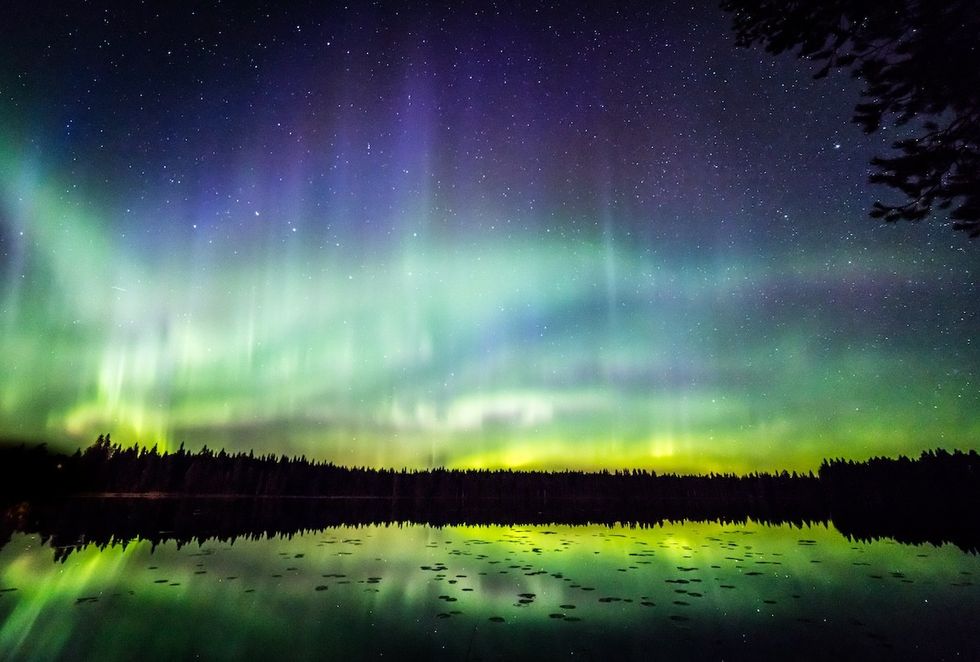Even though they’re more common than events like a total solar eclipse, catching a glimpse of the Northern Lights is still a top bucket list item for many. However, unlike the sun passing in front of the moon, the aurora can typically only be seen above a certain latitude. And while this often makes them a reason to take a trip to the subarctic, there’s a growing chance that many in North America might see light shows in their own backyards. That’s because scientists say the Northern Lights could soon become a “common sight” in the U.S. in the coming years.
RELATED: 8 Best Places to See the Northern Lights in 2024.
The southern expansion of potential viewing locations is related to a recent uptick in activity on the surface of the sun. Roughly every 11 years, a full solar cycle takes place in which the sun’s magnetic poles flip, going from a period of relatively inactivity to a sharp increase in events such as sun spots and mass coronal ejections (MCEs), according to Space.com.
These events bombard the Earth’s magnetic field with more severe solar weather and radiation that can affect radio communications, satellite function, and even power grids. But they also lead to more frequent, vivid, and far-reaching aurora.
There’s a chance you might’ve already experienced some of the effects of this solar cycle. Last May, the strongest solar storm recorded in over two decades brought the Northern Lights throughout parts of North America and Europe that very rarely get treated to such a sight.
“My first experience seeing the northern lights was truly mind-blowing,” Jordan Pegram told The Washington Post of the event. “I never thought it would happen in south-central Virginia of all places.”
While solar cycles are relatively predictable in their length and turnover, it can be harder to actually when the solar maximum is actually achieved. But experts say there’s reason to believe the months following this peak will bring some excellent chances to catch another spectacle.
“The real fun of the solar cycle is not now. It’s what comes in the next few years,” Scott McIntosh, a space weather scientist, told The Washington Post. “The storms get more complex, more frequent, and that makes them a bit more impactful for Earth.”
RELATED: The 10 Best Destinations for Stargazing in the U.S.
Current data for this solar cycle shows there’s reason to keep looking up. So far, there have been seven storms to hit the second-highest G4 tier. If this pace continues or is slightly stronger than average, scientists say there could be many more events to come—even in unexpected places.
“During such a cycle maximum, aurora at low latitudes could be an almost common sight, happening every other month or so,” Christian Möstl, head of the Austrian Space Weather Office, told The Post.
Even with the uptick in possible sightings, it always helps to have the right setup to ensure you have the best viewing experience. Similar to stargazing, it’s best to find a location that’s farther from bright city lights with a clear view of the sky, according to the National Oceanic and Atmospheric Administration’s (NOAA) Space Weather Prediction Center (SWPC). It can also help to stay up a little late, as the best time for spotting the Northern Lights tends to be between 10 p.m. and 2 a.m. But even if weather conditions don’t cooperate for the next solar storm, you’ll likely still have plenty of time to see them.
“The next three or four years, we should see some fine displays of aurora,” Bob Leamon, a solar physicist at the University of Maryland Baltimore County and NASA, told The Post. “It’s like a whole generation of people discovering something for the first time.”

